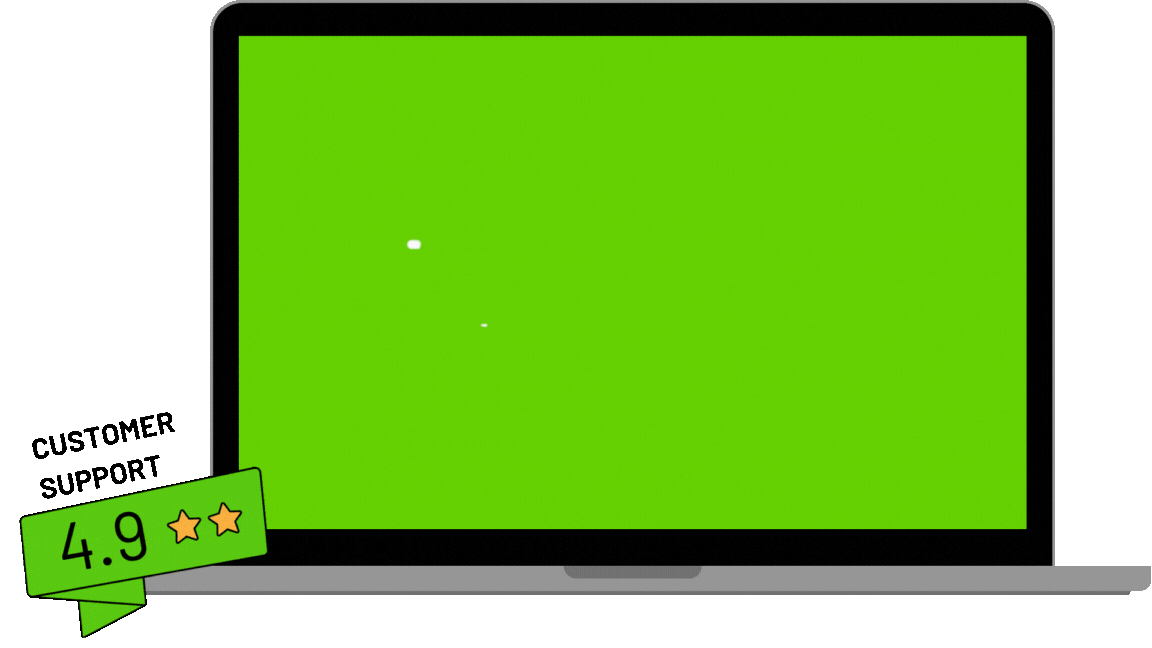Procurement in biotech and life sciences is anything but simple. Unlike office supply or MRO procurement, R&D teams source highly specialized lab supplies such as consumables, reagents, and instruments from hundreds of suppliers. To bring order to the chaos, many organizations turn to lab punchout catalogs.
Lab punchout catalogs connect supplier websites directly into ERP and P2P systems like Coupa, Ariba, SAP, or Jaggaer. They help lab operations, procurement, and finance maintain compliance and capture negotiated pricing. But while lab punchouts solve part of the purchasing challenge, they weren’t designed for the dynamic, multi-supplier needs of R&D labs.
This guide brings together everything lab leaders need to know: what lab punchout catalogs are, how they work, their benefits and drawbacks, and why many labs combine them with biotech procurement platforms like ZAGENO for full flexibility.
What is a lab punchout catalog?
A lab punchout catalog is a digital bridge between your lab’s eProcurement system and a supplier’s online catalog. Instead of juggling separate logins or uploading spreadsheets, you “punch out” of your ERP into the supplier’s site, shop with your contract terms, and bring selected items back into their system for approval.
How punchout catalogs work in lab procurement systems

Typical workflow:
- Log into your procurement system (Coupa, Ariba, Oracle, Jaggaer, NetSuite).
- Click the supplier’s punchout link.
- Browse the live catalog with your pricing.
- Build a cart.
- Cart data passes back to the ERP.
- Normal approvals apply.
- A purchase order is generated and sent to the supplier.
Lab punchout catalogs improve accuracy and reduce manual entry, but each supplier requires its own integration.
Hosted vs. punchout catalogs
Hosted catalogs began as the starting point for digital procurement, but they became outdated quickly. Lab punchout catalogs replaced them for real-time accuracy and scale. Still, neither hosted nor punchout catalogs alone address the full scope of R&D procurement complexity.
|
Feature
|
Hosted Catalog
|
Punchout Catalog
|
|---|---|---|
|
Data refresh
|
Manual, periodic
|
Real-time, live
|
|
User experience
|
ERP-native
|
Supplier’s website
|
|
Pricing
|
Often static
|
Contract-based, dynamic
|
|
Inventory visibility
|
Limited
|
Real-time
|
|
Maintenance owner
|
Buyer
|
Supplier
|
The complexity of lab procurement — and where punchout catalogs fit
R&D procurement is fundamentally different from buying office supplies or MRO goods. Scientific research introduces layers of complexity that make supply chain management far more challenging:
- Volatile supply chains: Availability fluctuates quickly, especially for consumables and reagents.
- High SKU complexity: Labs deal with tens of thousands of SKUs across categories.
- Documentation requirements: Safety data sheets (SDS), certificates of analysis (COAs), and compliance records must accompany every order.
- Balancing speed and control: Scientists need supplies fast; procurement must maintain compliance.
Punchout catalogs fit into this picture by giving labs real-time product visibility and ensuring procurement workflows remain intact. They help close some gaps, like reducing manual errors and streamlining approvals, but they don’t address the full scope of lab procurement challenges. That’s why many labs pair punchout catalogs with broader procurement solutions that can scale across hundreds of suppliers and cover non-catalog items.
The five biggest challenges with multiple lab punchout catalogs
Lab punchout catalogs help when labs rely on a small number of suppliers. As supplier diversity increases, they often introduce new problems:
- Complex integrations → Every punchout catalog requires IT setup, testing, and maintenance.
- Inconsistent user experience → Every supplier’s catalog behaves differently.
- Limited supplier coverage → Many niche vendors don’t offer punchout, forcing workarounds and increasing longtail spend.
- Fragmented tracking → Labs waste time checking multiple portals for status updates.
- Administrative overload → Multiple POs, invoices, and contracts.
ZAGENO survey data shows:
- 67% of scientists and lab ops would not recommend their current lab supply ordering process.
- 90% reported delays caused by unavailable or backordered items.
Troubleshooting common lab punchout catalog issues
Labs frequently encounter integration and workflow issues with punchout catalogs.
|
Issue
|
Symptom
|
Likely Cause
|
Fix / Owner
|
|---|---|---|---|
|
Price mismatch
|
Cart shows wrong pricing
|
Contract not synced
|
Supplier updates file
|
|
Cart fails to return
|
Items don’t load into ERP
|
cXML/OCI error
|
IT + Supplier support
|
|
Duplicate line items
|
Double entries in requisitions
|
Mapping misalignment
|
Re-map item codes
|
|
Unit of measure conflict
|
Order rejects at ERP stage
|
UoM mismatch
|
Buyer + IT validate
|
|
Ship-to errors
|
Wrong facility/site in order
|
Address config missing
|
ERP admin adds site
|
|
Timeout or SSO loop
|
User can’t punch out
|
Authentication error
|
IT + ERP team reset
|
|
Order not transmitted
|
Supplier never receives PO
|
Workflow stuck post-approval
|
ERP workflow check
|
Tip: Labs should create a punchout test checklist: validate UoM, GL codes, UNSPSC codes, contract pricing, and ship-to addresses before go-live.
Lab punchout catalogs vs. lab supply marketplaces
Lab punchout catalogs improve compliance and visibility with preferred suppliers, but they weren’t built for the realities of R&D. Marketplaces complement punchout catalogs by unifying sourcing across thousands of suppliers.
|
Feature
|
Punchout Catalog
|
Marketplace (ZAGENO)
|
|---|---|---|
|
Supplier coverage
|
Limited to connected vendors
|
Thousands of suppliers
|
|
Checkout
|
One PO per supplier
|
One PO across vendors
|
|
Non-catalog/longtail items
|
Rarely supported
|
Fully supported
|
|
Setup time
|
High
|
Minimal
|
|
Tracking
|
Supplier by supplier
|
Unified across suppliers
|
Tip: Punchout catalogs may fix inefficiencies within a supplier relationship. Lab supply marketplaces, such as ZAGENO, fix inefficiencies across suppliers.
Guided buying and lab punchout catalogs
One of the biggest frustrations researchers face is knowing where to buy the right product at the right time. With multiple lab punchout catalogs in play, product data is fragmented and researchers often resort to manual cross-checks, duplicate searches, or emailing procurement for help.
That’s where guided buying comes in. Guided buying uses rules, recommendations, and AI to help scientists and lab managers make the right purchasing decisions while still staying within procurement guardrails.
Key capabilities of guided buying with ZAGENO:
- Policy alignment built-in: If implemented, scientists are steered towards preferred suppliers and negotiated pricing.
- Smarter routing: Orders can be automatically mapped to the correct cost center, G/L code, or project, reducing rework for procurement and finance.
- Customizable budget thresholds: Procurement can set spend guardrails. Items under a threshold may flow through faster approvals; over-threshold orders get flagged for review.
- Rebate optimization: By nudging toward preferred vendors, guided buying helps labs hit rebate thresholds and strengthen supplier agreements.
- Metacart checkout: Items from multiple suppliers consolidate into one cart, one PO, one invoice — keeping approvals streamlined.
The lab supply marketplace advantage: When guided buying is layered onto a marketplace, researchers don’t have to guess where to start. They search once, see standardized results across suppliers, and are guided toward the best option, all while procurement rules run in the background.
Guided buying is a critical step toward consumerizing lab procurement: giving scientists an Amazon-like experience without losing the compliance, consolidation, and control procurement leaders need.
Procurement KPIs for lab punchout catalogs
To evaluate whether lab punchout catalogs are working:
- Time-to-requisition
- % of spend off-catalog
- PO cycle time
- % of orders delayed due to backorders
- of suppliers per cart / per invoice
- Scientist time spent searching for products
When lab punchout catalogs fit, and when you need more
Punchout fits when:
- You buy large volumes from a few strategic suppliers.
- Your product needs are relatively stable.
You need more when:
- You source from hundreds of suppliers.
- Scientists spend excessive time searching across punchouts.
- Finance wants consolidated POs and invoices.
- You need fast onboarding of niche or new suppliers.
How ZAGENO simplifies lab punchout catalog management
Managing multiple lab punchout catalogs can be burdensome. ZAGENO reduces this complexity with a single punchout connection into your ERP, giving you access to thousands of suppliers through one entry point.
ZAGENO was built to solve procurement challenges that punchout catalogs alone can’t:
- ERP integration → Compatible with Coupa, Ariba, SAP, Oracle, NetSuite.
- One punchout connection into your ERP or P2P.
- Marketplace model → 40M+ SKUs from 5,000+ suppliers.
- Metacart checkout → One PO, one invoice, one approval flow across all vendors.
- Supplier onboarding → 2–4 weeks saved per new supplier.
- AI-powered insights → Optimize delivery, costs, and timelines.
Lab punchout catalog FAQs
- What is a lab punchout catalog?
A lab punchout catalog links your procurement system with a supplier’s live catalog, allowing you to shop in real time and sync orders into your ERP. - What’s the main advantage of a lab punchout catalog?
Real-time pricing and inventory inside your procurement workflow. - Why are punchout catalogs limited for labs?
They don’t support non-catalog sourcing, require IT maintenance, and restrict supplier flexibility. - How is a lab punchout catalog different from a hosted catalog?
Hosted catalogs are static and buyer-maintained. Lab punchout catalogs are dynamic and supplier-maintained. - How do punchout catalogs integrate with procurement platforms?
Through cXML or OCI protocols that pass shopping cart data between the supplier and ERP. - Can labs use punchout catalogs with multiple suppliers?
Yes, but each adds setup and maintenance. ZAGENO simplifies with one connection to thousands. - Do punchout catalogs support approval workflows?
Yes — carts route back into your ERP for approval before a PO is issued. - Are lab punchout catalogs only for large organizations?
No. Startups use them too, but most labs need a marketplace alongside punchout for scale. - What’s an alternative to punchout catalogs for labs?
Lab supply marketplaces like ZAGENO offer punchout integration plus access to thousands of suppliers, non-catalog items, and a consolidated checkout.
Conclusion
Lab punchout catalogs are valuable for connecting procurement systems to strategic suppliers, but they don’t fully address the complexity of R&D sourcing. Scientists need flexibility, finance teams need consolidation, and procurement needs visibility.








